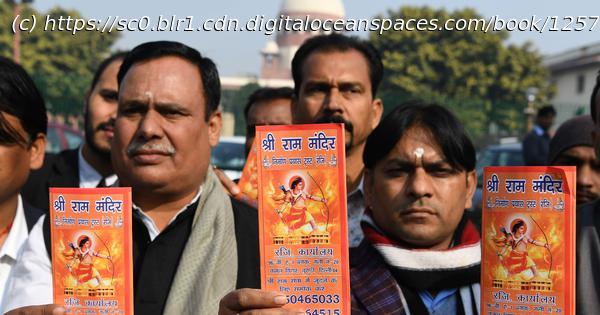The Babri Masjid ruling inaugurated a pattern where the Court berated the government or its favoured party, which still ended up on the winning side.
“The attempt to abrogate Article 370 is likely to meet its end in the Supreme Court”. That’s a line from a column I wrote after the Indian government radically changed the status of Jammu and Kashmir in August 2019. The court took four years to hear the case despite the crucial constitutional questions raised. By the time the verdict was ready to be pronounced in December 2023, I had changed my mind about the likely outcome. To quote Chief Justice DY Chandrachud’s favourite singer-songwriter, you don’t need a weatherman to know which way the wind blows.
While the practical effect of the Article 370 judgement appeared predictable, I was interested in the reasoning the bench would use to support the abrogation, for this is where judges had shown true creativity in the recent past.
In a case related to the change in government in Maharashtra, a bench of Chief Justice Chandrachud and Justices MR Shah, Krishna Murari, Hima Kohli and PS Narasimha found that the Maharashtra governor had not acted in accordance with the law in calling for a floor test. Yet, the court refused to reinstate former chief minister Uddhav Thackeray, citing the fact that he had resigned instead of facing that same floor test.
The new state government led by Shiv Sena faction leader Eknath Shinde that came into existence as a direct consequence of the illegality was permitted to continue undisturbed.
I assumed the Article 370 verdict was going to need a lot more imagination because of the inherent protections enjoyed by that section of the Constitution. Article 370, according to its third clause, could be declared inoperative by the president only with the consent of Kashmir’s Constituent Assembly. Since the Constituent Assembly had been dissolved decades previously, nullifying Article 370 was basically impossible.
Both the Jammu and Kashmir High Court had as recently as 2015 and the Supreme Court of India in 2016 held that Article 370 was a permanent feature of the Indian Constitution despite being located within the section dedicated to “Temporary, Transitional and Special provisions”.
Faced with this insurmountable obstacle, the Indian government had taken a crafty path towards abrogating Article 370 through two Constitution (Application to Jammu and Kashmir) Orders (CO 272 and CO 273). As I wrote in my column about the subject, “Instead of going at Article 370 directly, the Presidential order amended Article 367, which defines how constitutional provisions are to be interpreted”.
The danger in this approach, as I saw it, was that, “If a government can produce re-interpretations of the Constitution that state that ‘cat’ now means ‘dog’… there is no telling where it will lead us, without even the need to declare an Emergency.”
The five-judge Constitution Bench comprising Chief Justice Chandrachud and Justices SK Kaul, Sanjiv Khanna, BR Gavai and Surya Kant concluded that Constitution Order 272 did, indeed, misuse Article 367. In their verdict, they wrote, “Paragraph 2 of CO 272 by which Article 370 was amended through Article 367 is ultra vires Article 370(1)(d) because it modifies Article 370, in effect, without following the procedure prescribed to modify Article 370. An interpretation clause cannot be used to bypass the procedure laid down for amendment.”
Most observers would have said before the case was decided that, should the court hold the Indian government acted unconstitutionally in using the interpretative powers of Article 367 to revoke Article 370, it would lead to the striking down of the abrogation. But those observers, myself included, underestimated the inventiveness of the Supreme Court and its willingness to bypass precedent.
The judges declared that the part of the Indian Constitution least amenable to abrogation was in fact the easiest section of them all to revoke. As mentioned earlier, Article 370 (3) stated that Article 370 could be altered by the president in conjunction with the Kashmir Constituent Assembly. In the court’s view, the fact that the Constituent Assembly no longer existed did not alter the president’s powers which were, in fact, increased manifold because they could be exercised unilaterally following the Constitutional Assembly’s dissolution.
Home
United States
USA — Events Punishing victims, rewarding perpetrators: The Supreme Court and its creative contortions






